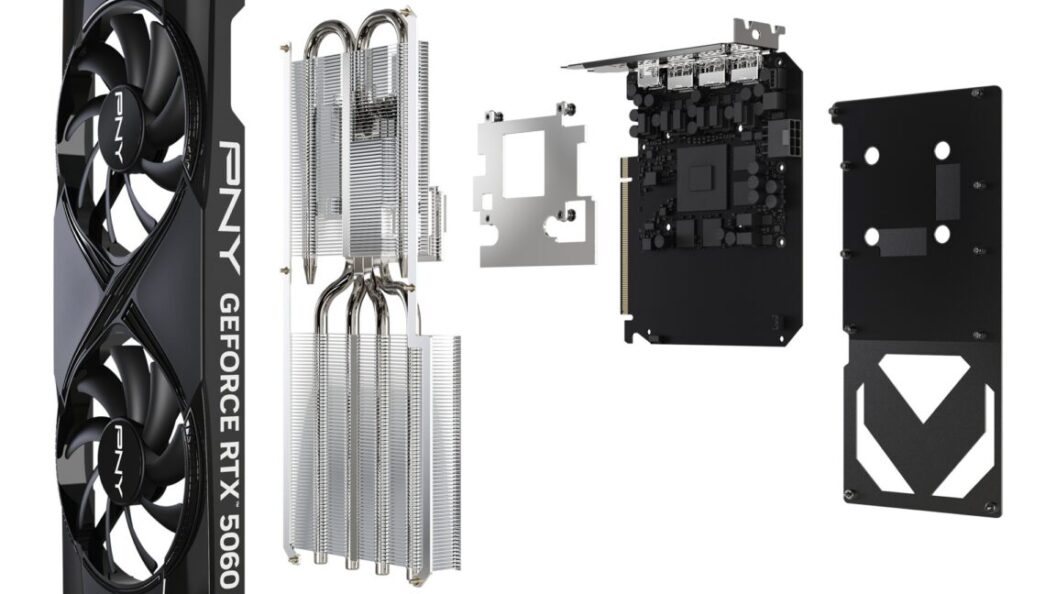Nvidia Unveils RTX 5060 Series: Performance Claims vs. Reality
Nvidia recently announced its new RTX 5060 and 5060 Ti graphics cards, further enhancing its 50-series lineup. Building on its celebrated DLSS Multi-Frame Generation technology, the company promotes ambitious performance levels purported to double that of the previous 40-series models. However, industry experts and consumers remain cautious as key details regarding actual native performance metrics continue to emerge.
Performance Boosts Via DLSS Technology
Nvidia asserts that the RTX 5060 and 5060 Ti can deliver double the performance of their predecessors, the 4060 Ti and 4060. This impressive claim is largely reliant on Nvidia’s DLSS Multi-Frame Generation technology, which can effectively insert up to three AI-generated frames in between each rendered frame. In contrast, the previous 40 series could only generate a single interpolated frame, while models from the 30 series and older lack any support for DLSS Frame Generation entirely.
However, the manner in which Nvidia presented these performance metrics raises questions. An analysis of benchmarks from the new cards suggests minor improvements over the previous generation—the 5060 Ti reportedly achieves 61 frames per second (FPS) in Hogwarts Legacy at 1440p, significantly up from 34 FPS on the 3060 Ti. Although these figures indicate a performance increase, they appear to be somewhat less than the twice-as-fast narrative Nvidia promotes, suggesting that the enhancements may not be as pronounced as it initially seems.
Caution Against Comparing Generations
A critical perspective among analysts is the complexity of drawing direct comparisons due to the reliance on Frame Generation in performance testing. Nvidia’s benchmarks use the maximum Frame Generation level available for each GPU, complicating apples-to-apples performance evaluations across different GPU generations. Consequently, the enthusiastic performance figures should be approached with some skepticism.
While users may appreciate enhanced frame rates and smoother gameplay with the new graphics cards, Nvidia’s reluctance to provide native performance comparisons further fuels uncertainty surrounding the actual capabilities of the 5060 series without the assistance of Frame Generation technology. As one analyst noted, “Frame Generation yields the best results when the base frame rate is already reasonably high, making it less effective for cards that struggle to meet minimal performance thresholds.”
No Immediate Plans for a Budget Option
Amidst the unveiling of the 5060 series, speculation surrounding a potential next-generation entry-level GPU—the RTX 5050—has also circulated. Earlier rumors suggested that Nvidia might release this model, marking its first new entry-level card since the RTX 3050 debuted in January 2022. However, Nvidia did not mention the 5050 in its recent announcements, indicating that the focus and priorities may rest firmly with the 5060 models in the near term.
Final Considerations: What Lies Ahead?
With the increasing reliance on AI for gaming graphics, the introduction of the RTX 5060 and 5060 Ti brings exciting possibilities for gamers, particularly those eager for higher frame rates and enhanced visuals. Nevertheless, understanding the limits of Frame Generation technology and recognizing the lack of straightforward performance comparisons remains crucial for consumers navigating their purchasing decisions.
As the tech community awaits third-party benchmarks and independent testing, anticipation builds to see whether these cards can genuinely hold up under scrutiny when examined on their own merit, without the enhancements from DLSS technology. The new generation of Nvidia GPUs prompts a re-evaluation of expectations and benchmarks, with broader implications for both the gaming and technology sectors moving forward.
In summary, while Nvidia’s showcasing of the 5060 series adds further excitement to its GPU offerings, the reality behind those performance claims remains to be fully deciphered. The significance of these developments underscores the evolving landscape of gaming technology—a space that continues to advance at breakneck speed.









